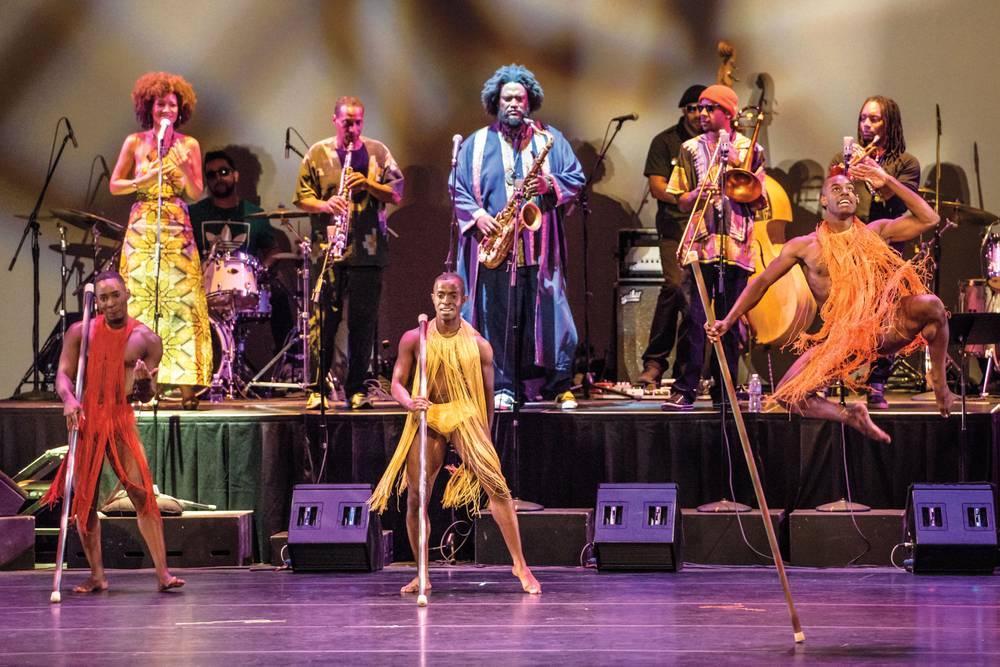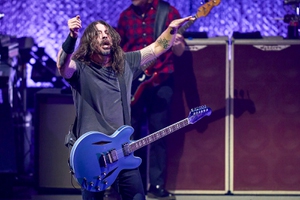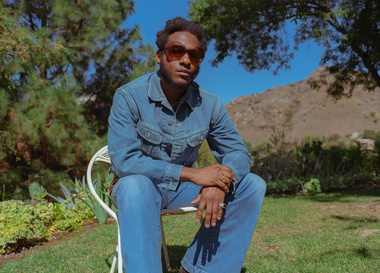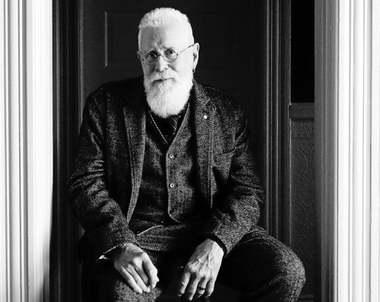
Kamasi Washington with Marcus L. Miller & Lula Washington Dance Theatre September 16, Smith Center's Reynolds Hall.
You’re reading about the Lula Washington Dance Theatre show in the music pages because one of the accompanying musicians was the celebrated choreographer’s nephew, Kamasi Washington. The 34-year-old tenor saxophonist from LA has struck such a chord this year—from his outstanding, appropriately named debut (triple-)album, The Epic, to his memorable work on another 2015 critical favorite, Kendrick Lamar’s To Pimp a Butterfly—that he’s doing what has long been difficult: bringing unfiltered jazz, mostly of the post-bop and progressive variety, to a new and growing audience. I saw this play out in San Diego three days before Kamasi and Lula’s September 16 Las Vegas debut at the Smith Center. At the Beauty Bar-reminiscent Soda Bar, Kamasi and his Next Step band (minus trumpeter Dontae Winslow) alternatively entranced and roused a largely indie-rock crowd for two and a half hours.
His Vegas collaboration with the dance troupe was decidedly different and shorter, but no less thrilling. After the first act exclusively featured a quartet led by talented drummer Marcus L. Miller—who assumed hand-drum duties during Kamasi’s “Askim” in a Cabaret Jazz pre-show program for students and community members—the amply-numbered, mainstream crowd at Reynolds Hall witnessed the 10-piece play three songs that covered some of the tremendous sonic range and interplanetary aura of The Epic, from the Coltrane fantasia of “Change of the Guard” to the frantic, Sun Ra/Pharoah Sanders-like “Miss Understanding” to the more soulful, straightforward-grooved and vocal-driven “The Rhythm Changes.” Bandleader Kamasi awarded each musician at least one spotlight moment—most notable: pluck-and-bow bass master Miles Mosley and keyboardist Brandon Coleman, whose keytar faithfully re-created the sounds of about 10 other instruments—but deservedly taking a handful for himself, none of which he squandered.
When the LWDT dancers returned to the stage for the world debut of Lula’s “A Separate Reality,” the jazz players improvised both within The Epic’s “Re Run Home” and with the five graceful but sprung men in front of them, the two crews not always in exact rhythmic step, but nonetheless fused by the number’s Afrocentric expressionism.
The overall program provided music fans with a dynamic and contextual interpretation of jazz via the dancers, and enabled everyone else to journey to the farthest reaches of American music—past, present and future.







